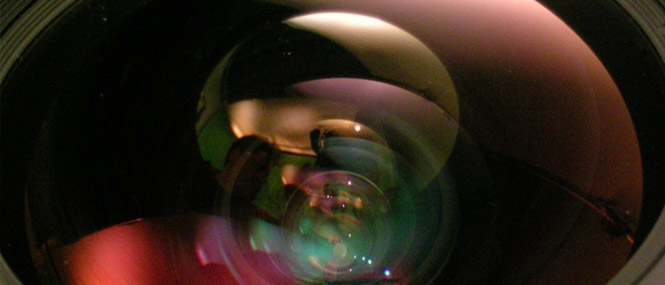Laser projectors are likely to emerge as one of the most interesting new technologies of this year, and perhaps the hit of NAB 2012.
There is an ongoing quest to achieve higher and more stable projection systems, partly as 3D stereo projection robs the audience of so much illumination, and partly just because audiences deserve to see imagery brighter than they are often being forced to experience. We have covered this with Douglas Tumbull on fxguidetv and at fxphd with Charles Ponyton.
Pointedly, many fxphd/fxguide readers would be aware there is a distinct possibility of the RED Camera company showing or releasing a laser projector at NAB. The company has been working on a new projector for some years now, as we have previously reported, and the money is on this year seeing the company having working units on display at NAB in Vegas.
Michael Goldman recently wrote a killer technical story on laser projectors for the SMPTE (which we have permission to refer to here, and there is a link to the full text below). Goldman does a great job of explaining the technology path as laser projectors moves from the research lab to the cinema. Laser offers high light output, stability of light quality and the largest jump in projection technology of the last decade.
But the road is not fully solved yet, as Goodman explains in the article, which also quotes Bill Beck, a co-founder of Laser Light Engines, Inc. and a longtime evangelist for the merits of laser technology. From the article:
“Principal among those drawbacks is the issue of laser speckle. Even defining it is hard—Beck jokes that you know it when you see it. But, basically, he says speckle comes when a raw laser is used as a light source for a digital projector, and shows up on screens as ‘a shimmery, sparkly overlay on the whole picture that is completely unacceptable. This is a feature of all (raw) laser light sources, and until very recently, was thought to be impossible to eliminate.’
However, in 2010, Kodak demonstrated low speckle RGB laser light sources that made enough of an impression on projector manufacturers, 3D companies, and studios that general development of laser projection technology has sped up since then. The problem isn’t fully solved in the sense that despeckling technology has proved most effective on white screens, as opposed to silver screens, but it has been effective enough to start convincing the industry that laser’s advantages are worth pursuing at long last.”
Of course we have already seen many cinemas move to digital projection, so as Goldman points out, “since exhibitors have gone through all the time, pain, and expense of converting from film exhibition, they might understandably not want to choose the current moment to radically convert yet again.”
Goldman quotes Bill Beck again: “About a billion dollars was probably invested in the development of digital imaging chips, both DLP® and LCOS,” he says. “And yet, the amount of investment into new Solid State light sources has been, well, let’s just say far less than that. Limited investment in commercialization and scale-up is really the only remaining impediment to wider-scale adoption over the next few years. Xenon technology is great, but it’s been taken as far as it can go, in my opinion, and bigger Xenon lamps cannot solve the 3D brightness problem. In fact, major manufacturers of Xenon arc lamps are also investigating lasers.”
Nearly every major projector manufacturer and other technology companies have formed an industry association called the Laser Illuminated Projector Association (LIPA) to get the ball rolling on addressing such regulatory issues and standards.
But the solution will not be cheap, and adoption may be slow at cinema theater level, so the focus falls on others such as RED to see if this will be accessible to smaller independent operators or even individuals. Either way at NAB it will be interesting to see if laser projectors capture the attention many feel they will and certainly attendees will have a great chance to judge for themselves. SMPTE and NAB have several sessions on new technology, 4K, high frame rates and particularly laser projectors as part of the Technology Summit on Cinema 2012 in Vegas April 14th and 15th.
A full version of the article is available here. (Our special thanks to SMPTE and M. Goldman).
